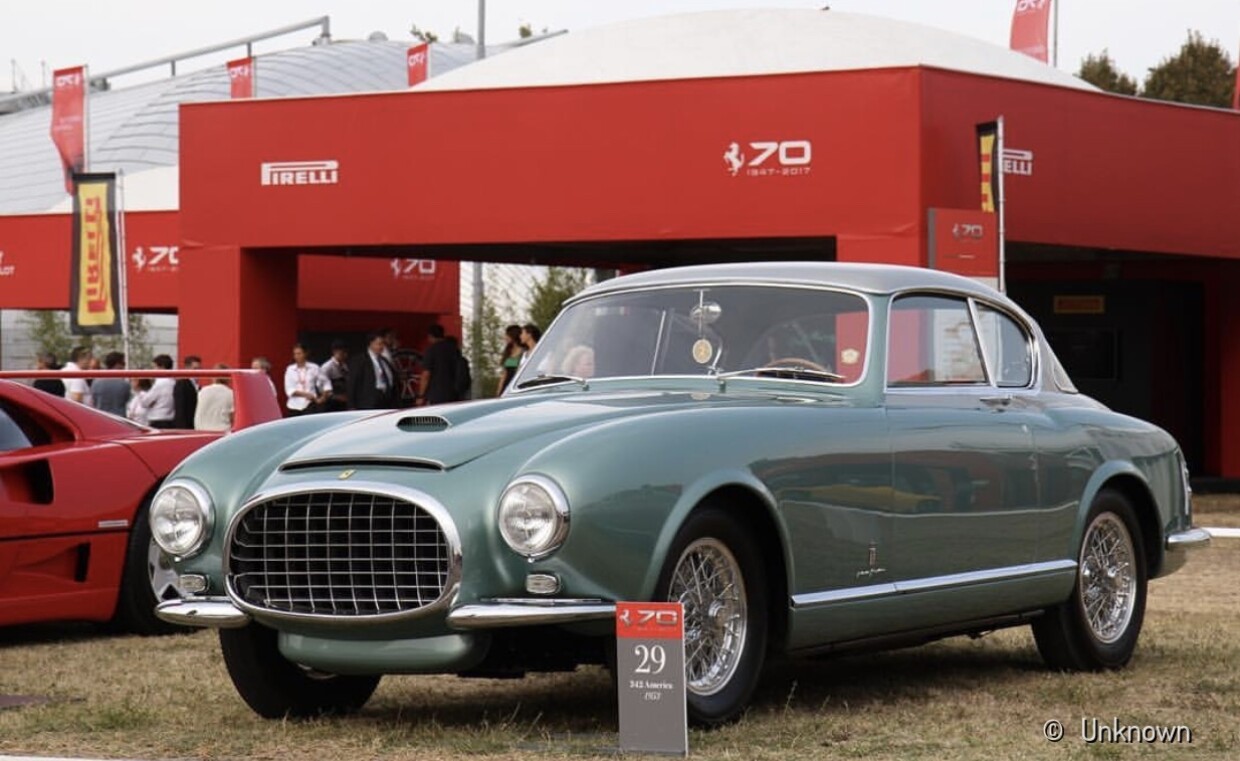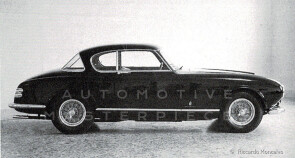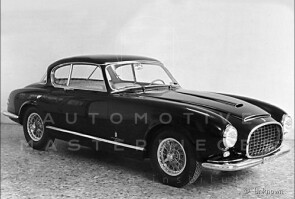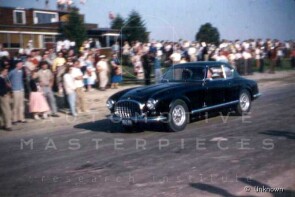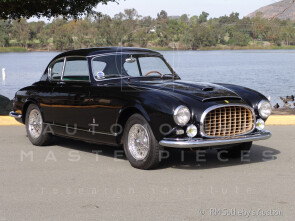
1952 Ferrari 342 America
ON/OFF
Why am I an Automotive Masterpiece?
L. Limited edition cars
no. 6 manufactured, 5th built
In July 1950, at the Nations Grand Prix in Geneva, Ferrari fielded the new 340 F1 single-seater. With a displacement of 4,101.66 cc, it was effectively an intermediate step towards reaching the 4.5-liter limit imposed by the regulations for naturally aspirated engines. The car, like the previous 275 F1, was built around Aurelio Lampredi’s “large” V12 engine. A few months later, the same engine was installed in a sports car: the 340 America, with which Ferrari aimed to strengthen its presence in the U.S. sports car market and intended to later offer in a grand tourer version.
With the production of the 340 America underway, Ferrari aimed to diversify its product to attract customers who, while intimidated by the performance of the racing version, were nonetheless captivated by the allure of the “Prancing Horse.” Production of the 340 in a GT version began once the model’s sporting reputation was established, bolstered by successes such as the victory of a 340 America driven by Gigi Villoresi and Pasquale Cassani at the 1951 Mille Miglia. In October of the same year, a Ghia-bodied coupe named the 342 America debuted at the Paris Salon de l’Automobile. However, the public and press response was not as positive as hoped but matters improved with the small-scale production that began the following spring, featuring designs first by Vignale and then by Pinin Farina, who created the most original and elegant versions of the new vehicle. This marked the beginning of a successful collaboration with Ferrari, who was seeking a “trusted” designer for its grand tourers and increasingly turned to the Turin-based atelier. The designation “342” was unusual, as it did not follow the convention of indicating the unitary displacement. The 342 America was intended for an elite clientele, not necessarily focused on sportiness, and was designed for road use. Accordingly, Lampredi’s 4.1 L engine was “tamed”: the rev limit was lowered to 5,000 rpm compared to the 6,000 rpm of the 340, achieving more balanced performance. The wheelbase extension to 2,650 mm enhanced comfort, allowing for possible 2+2 seating and making the chassis less “twitchy,” thus improving driving predictability. The choice of a four-speed synchronized gearbox also improved the car’s drivability. One of the model’s early patrons who contributed to its fame was former King Leopold III of Belgium, a figure often in the spotlight, who commissioned a black Pinin Farina cabriolet with light interiors and a 4.5 L engine (chassis number 0234/AL). This was followed by a silver cabriolet (chassis number 0248/AL), which was exhibited at the 1953 New York Motor Show, where Pinin Farina showcased the clean and elegant lines previously seen on the 212 Inter. It was notable for its rather generous and prominent grille, as well as the understated design where every detail was carefully crafted to enhance the purity of the surfaces. For example, the door handle was recessed into the bodywork, which was accentuated only by a chrome line along the lower section. The Turin coachbuilder also crafted three coupes (chassis numbers 0240/AL, 0242/AL, 0246/AL), each with a distinct stylistic personality—the first in silver, the second in blue, and the third in black; all featured the prominent grille and a panoramic rear window. In total, Ferrari produced six examples of the 342 America between late 1952 and 1953: one Vignale cabriolet, two Pinin Farina cabriolets, and three Pinin Farina coupes.
The Ferrari 342 America chassis number 0246/AL is the third of the chassis to be bodied as a coupe by Pinin Farina. With its mechanics and chassis completed on December 27th, 1952, it was sent to Pinin Farina for final assembly and probably completed in early 1953. Numerous sources credit it with an appearance at the 1954 Geneva Motor Show; however, there is no evidence to confirm this. In the photos of the Ferrari and Pinin Farina stands, the car is not present. It’s possible that the car participated as a test vehicle or remained outside the main display, or that it was initially scheduled to participate, but plans changed—these details remain to be verified. The car came equipped with a 240 hp engine and a slightly smaller-than-usual 92-liter fuel tank. It shared the distinctive double hood scoops of the 342 Cabriolet built for King Leopold, although they were more harmoniously integrated. All bumpers (quarter bumpers at the front) were mounted low, forming the front and rear edges of the coachwork. The rear fenders featured twin taillights recessed within chrome bezels. It’s believed that chassis no. 0246/AL was originally raced by Franco Fassio from Genoa, who used it in a couple of rallies, the first being the 1953 Rallye Soleil-Cannes, held from March 29th to April 5th. However, these reports have been passed down without any confirmed documentation or period photographs. After the assembly records, the first available documents are related to its first official ownership by Scuderia Ferrari, as well as the certificate of origin and initial registration (Modena plates) in April 1953. In that same month, the car was sold to the American James Gerard Murrey Jr., who took it overseas. The Italian license plates were de-registered in February 1954. By early 1954, Murrey sold the car to Steve A. Briggs, who raced it in the 1954 Wilmot Hills Race Course concours event in Wisconsin, where it took first in its class. In 1958, it was acquired by William R. Peters, who kept the car for over 30 years. Other owners followed. The Ferrari 342 America chassis number 0246/AL underwent a high-quality restoration by Tom Valerio in 1989, returning it to its period-correct black and beige color scheme, and has since participated in major Ferrari gatherings and concours events. In 2012, it was restored again and repainted in metallic green and gray with beige interiors by Brian Hoyt. It was voted “Best Vintage Ferrari” and “Judges Choice” at the 2006 Winter Park Concours d’Elegance and displayed at the Cavallino Classic, where it won 1st place in “The Elegance Cup – for the finest coach-built Ferrari group” in 2017. It has also been shown at Pebble Beach and Amelia Island concours, among others. Still matching numbers, its original mileage remains remarkably low to this day.
